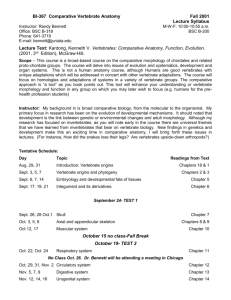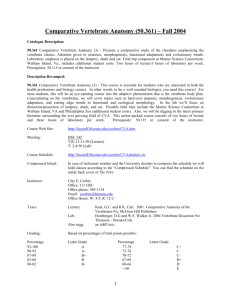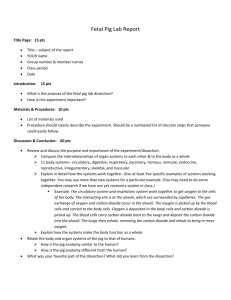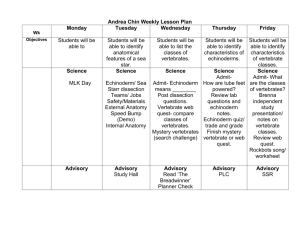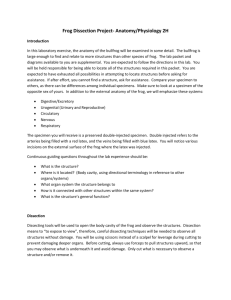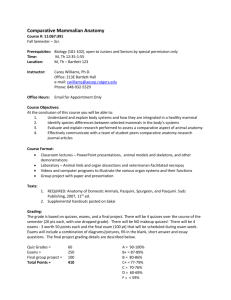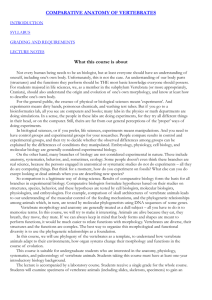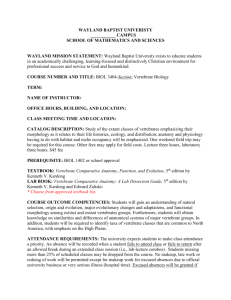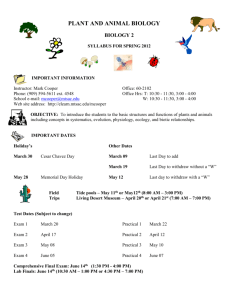COMPARATIVE VERTEBRATE ANATOMY
advertisement
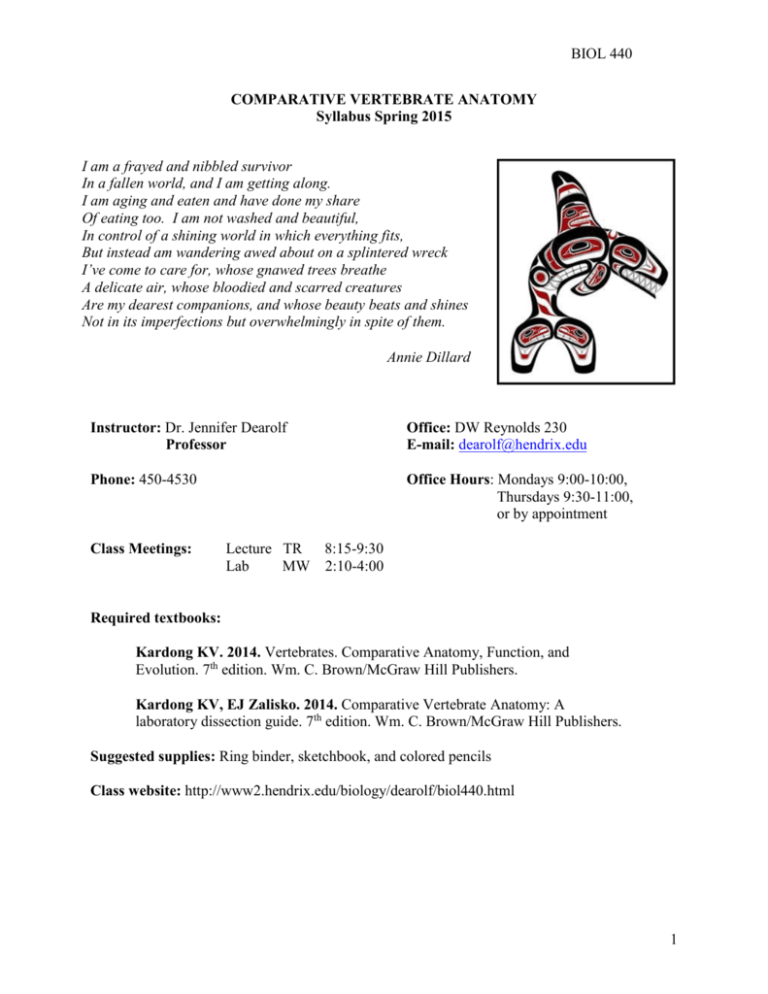
BIOL 440 COMPARATIVE VERTEBRATE ANATOMY Syllabus Spring 2015 I am a frayed and nibbled survivor In a fallen world, and I am getting along. I am aging and eaten and have done my share Of eating too. I am not washed and beautiful, In control of a shining world in which everything fits, But instead am wandering awed about on a splintered wreck I’ve come to care for, whose gnawed trees breathe A delicate air, whose bloodied and scarred creatures Are my dearest companions, and whose beauty beats and shines Not in its imperfections but overwhelmingly in spite of them. Annie Dillard Instructor: Dr. Jennifer Dearolf Professor Office: DW Reynolds 230 E-mail: dearolf@hendrix.edu Phone: 450-4530 Office Hours: Mondays 9:00-10:00, Thursdays 9:30-11:00, or by appointment Class Meetings: Lecture TR 8:15-9:30 Lab MW 2:10-4:00 Required textbooks: Kardong KV. 2014. Vertebrates. Comparative Anatomy, Function, and Evolution. 7th edition. Wm. C. Brown/McGraw Hill Publishers. Kardong KV, EJ Zalisko. 2014. Comparative Vertebrate Anatomy: A laboratory dissection guide. 7th edition. Wm. C. Brown/McGraw Hill Publishers. Suggested supplies: Ring binder, sketchbook, and colored pencils Class website: http://www2.hendrix.edu/biology/dearolf/biol440.html 1 BIOL 440 Grades and Grading: Your grade will be based on the results of a) lecture and lab examination scores, b) comprehensive final, and c) quizzes and assignments as follows: 3 Lecture exams 3 Lab practicals 1 Final exam Assignments Quizzes Paper 300 points 450 points 150 points 75 points 75 points 100 points A = 1029 – 1150 pts; B = 914 - 1028 pts; C = 799 – 1027 pts; D = 684 – 798 pts; F = < 683 pts Course goals: 1) to learn and use comparative methods to understand patterns of evolution, function, and development of the vertebrates 2) to gain insight into the vertebrate body plan using comparative dissection techniques 3) to become an accomplished dissector Attendance Policy: To do well in this course, you must be here, both in body and in mind. There will be no make-up exams given unless you have a doctor’s excuse for a serious medical situation or you are carrying out official College business. Academic Honor Code: As in any other course, any form of academic dishonesty will be taken very seriously, including cheating, plagiarism, or presenting work as your own when it isn’t. Please refer to pages 30-35 in the Course Catalog for the college’s academic integrity standards. Students with Disabilities or Special Needs: It is the policy of Hendrix College to accommodate students with disabilities, pursuant to federal and state law. Any student who needs accommodation in relation to a recognized disability, for example in arrangements for seating, examinations, note taking, or access to information on the web, should inform the instructor at the beginning of the course. In order to receive accommodations, students with disabilities are directed to contact Julie Brown in Academic Support Services at 501-505-2954. Laboratory Procedure: First and foremost, I would like to emphasize some of the ethical considerations that must be made when dissecting vertebrates. As many of you are aware, there are people who object to the use of animals in teaching and research, and these uses even include the preserved specimens that you will be working on in this course. Please take some time to think about these issues and how they will impact your work in the lab. Primarily, I hope these ideas will influence how you approach your dissections. Be professional! To reiterate this point, you are not on a “Search and Destroy” mission to find anatomical structures. Most of the dissection work in this course can be accomplished with a blunt probe, not a scalpel. Finally, your specimens will be used in the lab practicals, so neatness counts. 2

